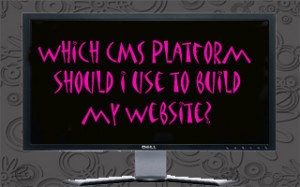Achieving high rankings in the Google Serp’s requires a well thought out website design. Building a site begins with choosing the best Content Management System (CMS) or Content Management Framework (CMF) to suit your corporate, small business or personal website needs
Luckily, now-a-days, one can upload a Web Application Framework to their server database and within hours have a professionally designed website.
However, the question is: WHICH CMS PLATFORM IS BEST?
What is The Optimal CMS Platform for You?
Before choosing your website platform, consider your business or personal needs:
- eCommerce
- Multiple Users
- Ease of Use
- Availability of Support
- Popularity
- Integration
What is ocPortal?
ocPortal is the new generation of CMS Platforms. Unlike WordPress & Drupal, ocPortal bundles almost every common website feature [within the CMS] , so there’s no need for third party add-ons, plug-ins or modules.
WYSIWYG editor, discussion forums, events calendars, photo galleries, news and social networking components are standard in the ocPortal website build. ocPortal even handles search engine optimization & site security.
- Runs on most PHP web servers.
- Designed for use by “The Common Man” or shall we say: “non-techies.”
What is WordPress?
WordPress is a free and open source content management system (CMS) based on PHP and MySQL. Because of it’s accessibility & user friendly interface, 27 million people use it worldwide.
WordPress is definitely the easiest to use blogging & website platform. It has many features including: plug-ins for everything you could imagine, free theme templates and custom theme templates. Themes can be manipulated through PHP or html.
Technical experience is not necessary when using the WP CMS. It is a very user friendly choice for both web designers & clients. Many website builders use WP, and with minimal instruction, clients can take over & manage their own site management.
After watching a few video tutorials & becoming familiar with the user friendly interface ; one can have a professional site uploaded in about 2 hours or less … . .
A Wordpress built website is dynamic & responsive enough for use by “The Common Man. ”
What is Drupal?
A free and open-source content management framework (CMF) written in PHP. It is a back-end system for “high end” & robust websites. [Ex. News, Multimedia, Publishing, Intranet/Corporate, Educational, Music and Governmental Websites.
Drupal has over 20,000 available add-on modules. Unlike most, it comes with features for multiple user accounts & user permissions. It allows users to chat with one another, edit page content and upload directly to the site.
Drupal is known for it’s taxonomy and ability to tag, categorize and organize complex & robust web content. It is used by sites that require complex data organization; for community platform sites and for eCommerce. It requires technical expertise & perseverance to master this CMS. Therefore, “it is not for the common man.”
The Drupal Content Management Platform is “Not for The Common Man.”
What is Joomla?
Joomla is a free and open source (CMS) for publishing content on the web and intranets and a model–view–controller (MVC) Web application framework that can also be used independently.
Less complex than Drupal, yet more difficult to use than WordPress.
Originally designed to perform as a community platform, with great social networking features. Joomla supports E-commerce, social networking and allows for up to 9 different types of user permissions.
What is WebGUI?
WebGUI is an open source content management system written in Perl. Known as “The All in One CMS,” WebGUI is built via themes, templates, add-ons and assets.
Similar to the Drupal Platform, the robustness of WebGUI allows for interactive online interfaces, secure corporate Intranet, individual user permissions, E-commerce, Event Management Systems, Forums, and Online Charity Donations.
The WebGUI Content Engine is designed for business, government, non-profit, and educational website. [Examples: America.gov & California State University’s Websites].
Magento
If you are looking to sell something on the internet; one might consider opting for an independent eCommerce platform – one eCommerce solution is Magento.
While most CMS platforms manage content using HTML & CSS, Magento introduced a drag-and-drop interface; allowing non-technical users to take control of their content. It possesses a multi-source inventory [MS] application allowing the possibility to manage inventories from multiple physical locations.
Also, Magento has stepped away from responsive web design (RWD) sites , instead it uses PWAs built 100% using JavaScript, HTML, and CSS making smartphone internet shopping seamless & more efficient. Definitely a great choice for Ecommerce.
After choosing your CMS Platform; the next step is designing a SEO enhanced website architecture ..
Related CMS / CMF Links:
- [Return to SEO – Search Engine Optimization Homepage]
- Contact SEO Consultant, Tony Eason
- 9 Most Popular Free Content Management Systems
- 10 Most Popular Content Management Systems Online
- Choosing the right CMS Platform
- Choosing a CMS platform, and the right provider
[ad#ynot]

